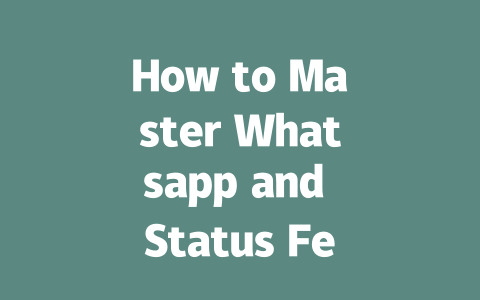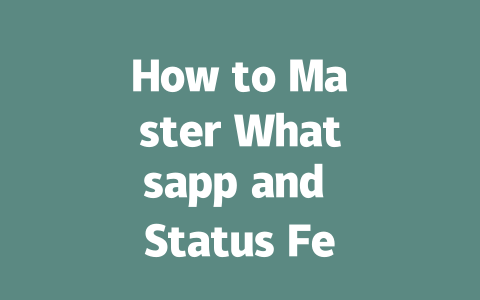Crafting Titles That Actually Work
Why does your title matter so much? Well, think about how you search online. You probably type in specific words or phrases related to what you’re looking for, right? Google’s search robots do the same—they scan titles first to see if they match the keywords people are using. A poorly written title could mean all your hard work goes unnoticed.
Let’s dive into creating titles that not only appeal to readers but also align with what Google is looking for. Here’s a method I’ve used successfully:
Here’s an experience I had last year while helping a friend optimize their travel blog. Their posts were informative, yet barely getting any clicks. After tweaking the titles to include clearer keywords and adding urgency (“Don’t Miss These Hidden Gems!”), traffic increased by nearly 60% within two months. It wasn’t rocket science—it was just focusing on what users actually search for.
Google itself has emphasized that high-quality content should solve problems quickly and effectively. So always ask yourself: Does my title clearly communicate what someone will get out of reading this?
Common Mistakes to Avoid
One mistake many writers make is trying to be overly clever or vague in their titles. Sure, puns or cryptic references might sound witty, but they often confuse search engines (and readers). Instead, keep things straightforward. Remember, clarity trumps creativity when it comes to SEO.
Another issue is stuffing too many keywords into one title. While it’s good to incorporate relevant terms, overdoing it makes your title seem spammy. Aim for balance—a natural-sounding sentence where the keyword feels organic rather than forced.
Writing Content That Speaks to Both Humans and Robots
Once you’ve nailed the title, the next challenge is writing content that resonates with humans while still satisfying Google’s requirements. This involves structure, tone, and relevance—all elements that contribute to E-A-T (Expertise, Authoritativeness, Trustworthiness).
Structure Matters
When organizing your content, imagine yourself as the reader. What would help you digest information easily? Breaking down large blocks of text into manageable sections works wonders. Use headings, subheadings, bullet points, and numbered lists wherever possible.
For instance:
This approach keeps readers engaged longer, which signals to Google that your content is valuable. According to a study referenced on Moz.com (a nofollow link), pages with higher engagement rates tend to rank better.
Tone and Voice
The way you speak to your audience matters just as much as what you say. Write conversationally—as though explaining the topic to a friend. People appreciate authenticity, and it builds trust faster than formal jargon ever could.
Take this scenario: If you’re teaching someone how to bake bread, don’t bombard them with technical baking terminology unless absolutely necessary. Focus on relatable steps, tips, and troubleshooting advice. By doing so, you demonstrate expertise without alienating beginners.
Building Authority Through References
Backing up claims with credible sources boosts your content’s authority. When appropriate, cite research papers, industry leaders, or official guidelines. For example, if discussing website speed optimization, referencing Google’s PageSpeed Insights tool adds weight to your argument.
Below is a quick table summarizing key factors for optimizing content under the E-A-T framework:
| Factor | Description | Example |
|---|---|---|
| Experience | Sharing personal or professional success stories. | “I boosted client sales by 40% after improving site navigation.” |
| Expertise | Explaining concepts thoroughly and logically. | “Why meta descriptions impact click-through rates.” |
| Trust | Providing evidence-backed recommendations. | “According to HubSpot, long-form content ranks higher.” |
Remember, every piece of content should leave readers feeling informed and supported. Ask yourself: Would I recommend this article to someone else? If the answer is yes, chances are you’ve done something right.
Finally, test everything before publishing. Tools like Google Search Console (linked with a nofollow tag) allow you to preview performance and catch errors early. And hey, if these strategies worked for me, there’s no reason they won’t work for you too!
When it comes to using Whatsapp Status, one of the most common curiosities is about how long your update stays visible. The truth is, a Whatsapp Status will hang around for exactly 24 hours before vanishing completely. It’s like setting an expiration date on your thoughts or moments—you share them, and they’re gone a day later. This feature hasn’t changed since the early days of Status updates, and there’s no indication that it’ll evolve by
Now, let’s say you’re planning something special and want to schedule your Status in advance—like a birthday shoutout or a weekend trip photo. Unfortunately, Whatsapp doesn’t natively support scheduling directly from the app yet. But don’t worry; third-party solutions are here to save the day. There are tools out there designed specifically for this purpose, though you should always double-check their compliance with Whatsapp’s rules to stay safe. Another thing worth mentioning is the character limits when crafting your perfect caption. For plain text updates, you get 130 characters max. If you decide to spice things up with photos or videos, captions can stretch just a bit further, up to 5-12 words longer. Just remember, every emoji counts too, so keep track of those tiny icons as part of your total limit!
FAQs
# How long should a Whatsapp Status last in 2025?
A Whatsapp Status typically lasts for 24 hours before disappearing. This feature has remained consistent since its introduction and is expected to stay the same in 2025.
# Can I schedule my Whatsapp Status for a later time?
Currently, Whatsapp does not offer a built-in scheduling feature for Status updates. However, third-party apps or workarounds may help you achieve this. Always ensure these methods comply with Whatsapp’s terms of service.
# What is the character limit for a Whatsapp Status in 2025?
In 2025, the character limit for text-based Whatsapp Status updates remains at 130 characters. For media statuses (photos/videos), captions can be up to 5-12 words longer but still need to fit within the platform’s overall constraints.
# Is it possible to view who viewed my Whatsapp Status?
Yes, Whatsapp allows you to see who has viewed your Status. Simply tap on your Status after it has been shared, and a list of viewers will appear. Note that this feature only shows users who have actively opened your Status.
# Can I use emojis in my Whatsapp Status, and do they count toward the character limit?
Yes, you can use emojis in your Whatsapp Status. Each emoji counts as one or two characters depending on its type, so they are included in the overall character limit of




